To maximize your VR vision experience, start by properly adjusting your headset’s interpupillary distance and positioning the lenses directly in front of your eyes to prevent light leakage and enhance clarity. Next, experiment with field of view settings in your configuration menu—wider FOV increases immersion while narrower settings improve stability and reduce motion sickness. Finally, take regular breaks every hour and follow the 20-20-20 rule to prevent eye strain and fatigue. These foundational adjustments will release your headset’s full potential.
Adjust Your VR Headset for Optimal Eye Alignment
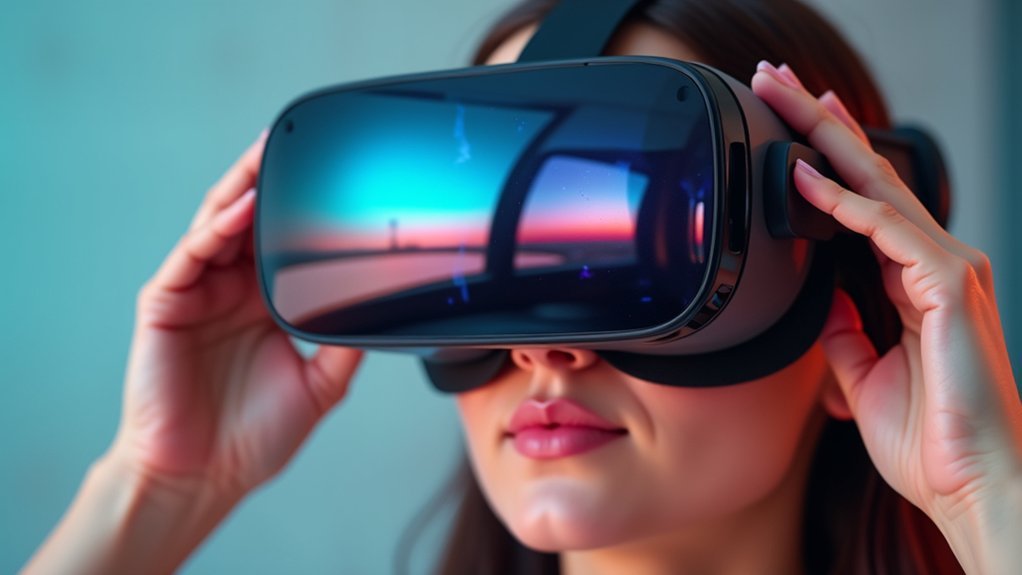
Why does your VR world sometimes look blurry or cause eye strain after just a few minutes of use? The answer lies in proper headset alignment.
VR headsets require precise adjustment to deliver ideal image clarity and comfort during extended use.
Proper VR headset calibration is the foundation of comfortable, strain-free virtual reality sessions that maintain crystal-clear visuals throughout extended gameplay.
Start by ensuring a secure fit around your head to prevent light leakage that compromises visibility.
Next, adjust your interpupillary distance settings to match the space between your eyes—this alignment is essential for reducing eye strain and achieving sharp visuals.
Position the lenses directly in front of your eyes by adjusting the headset angle.
If you wear glasses, use corrective lenses or an eyeglass spacer to maintain comfort while protecting your VR lenses.
These simple adjustments transform your experience from frustrating to immersive.
Customize Your Field of View Settings for Enhanced Clarity
While your headset’s physical alignment provides the foundation for clear vision, fine-tuning your field of view settings opens up the full potential of your VR experience.
Start by adjusting interpupillary distance settings to match your eye spacing precisely. This guarantees proper lens position adjustments and reduces eye strain during extended sessions.
Next, experiment with field of view settings within your VR headset’s configuration menu. Many applications offer customizable FOV options that you can modify based on your comfort preferences.
Wider settings boost immersion but may trigger motion sickness in sensitive users, while narrower views provide enhanced clarity and stability.
Regular calibration maintains ideal alignment, especially when sharing your headset. These adjustments dramatically improve your overall visual experience, delivering sharper images and greater comfort throughout your virtual adventures.
Take Regular Breaks to Prevent Eye Strain and Fatigue
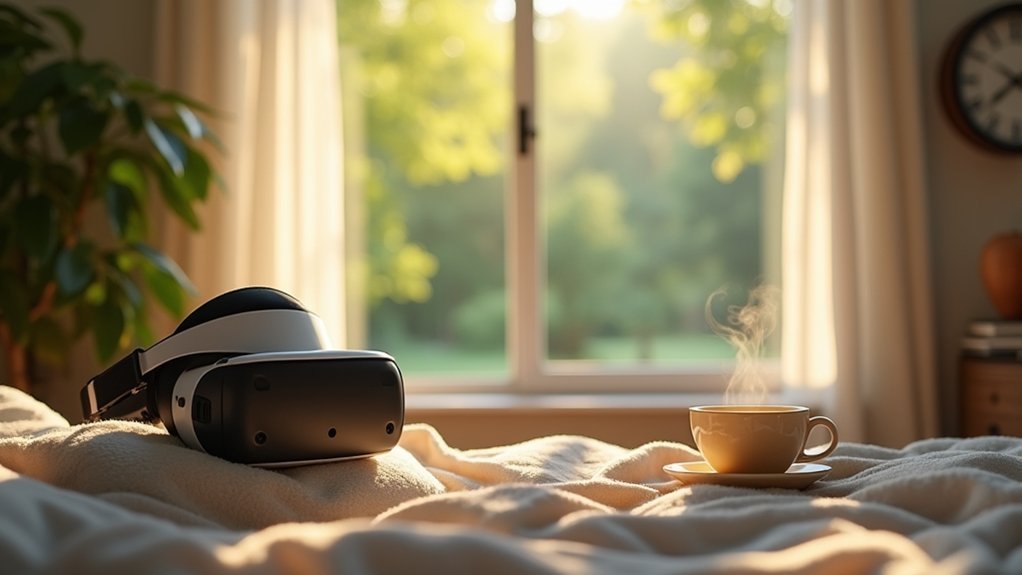
How often should you pause during your VR sessions to protect your vision? Take breaks every hour to greatly reduce eye strain and fatigue from prolonged screen exposure. Your eyes need time to rest and recover during extended VR sessions.
Follow the 20-20-20 rule by looking at something 20 feet away for 20 seconds every 20 minutes to help your eyes refocus and relax. Listen to your body and take regular breaks at the first signs of discomfort like dryness or irritation.
During breaks, prioritize these activities to enhance your VR experience:
- Stretch and move to alleviate physical tension and refresh your focus
- Drink water regularly to maintain hydration and counteract eye fatigue symptoms
- Rest your eyes completely by closing them or looking at distant objects
Frequently Asked Questions
How to Enhance VR Experience?
Adjust your headset’s fit and IPD settings for comfort. Clean lenses regularly with microfiber cloths. Use quality headphones for binaural audio. Take hourly breaks to prevent eye strain and stay hydrated.
What Is the 20/20 Rule for VR?
You should take a twenty-minute break every twenty minutes during VR use. Look at something twenty feet away for twenty seconds. This practice reduces eye strain, prevents headaches, and maintains ideal visual health.
How Can I See Better in VR?
You’ll see better in VR by adjusting your headset’s IPD settings, ensuring proper fit, cleaning lenses regularly, experimenting with lens positions, and using prescription inserts if needed.
How Do I Maximize My VR Performance?
You’ll maximize VR performance by updating your GPU drivers, lowering resolution to maintain 45fps minimum, using Oculus Tray Tool for real-time adjustments, and switching to Ethernet for stable online connections.

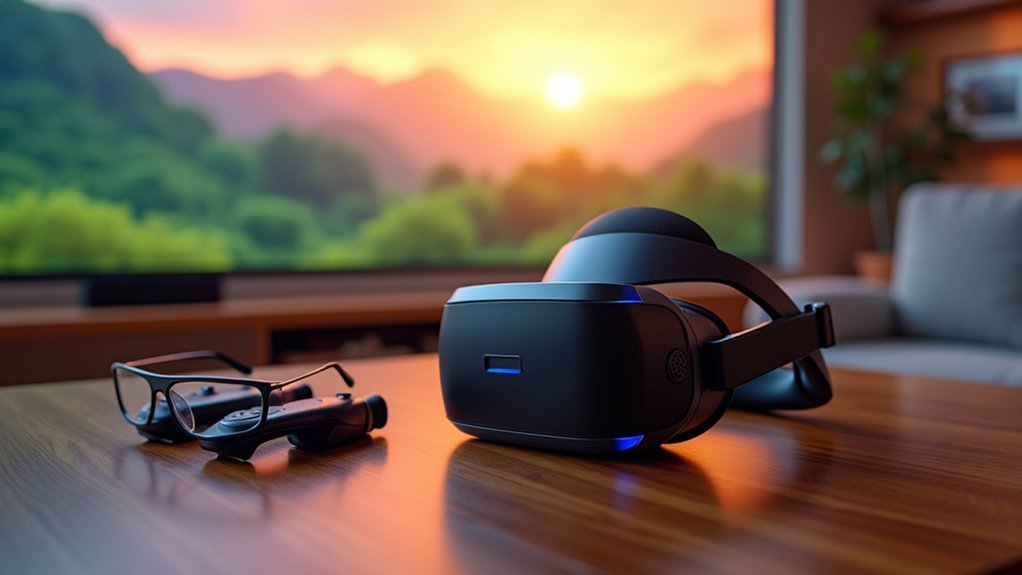
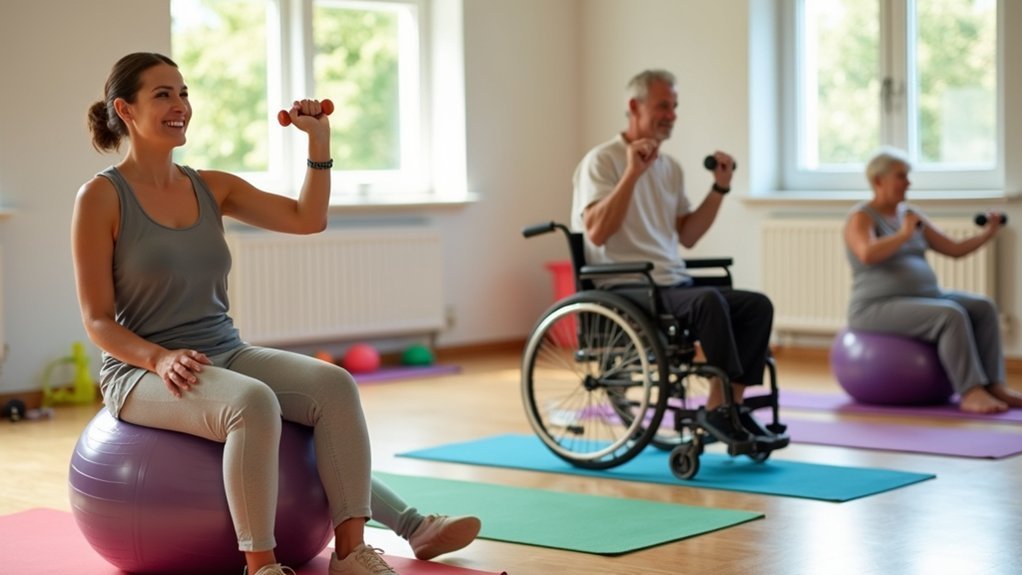
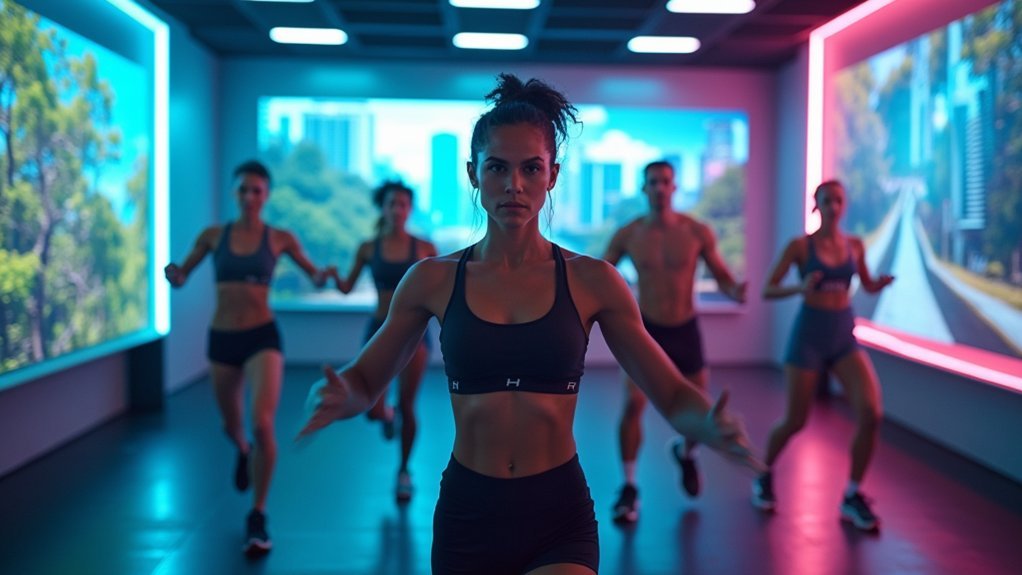

Leave a Reply